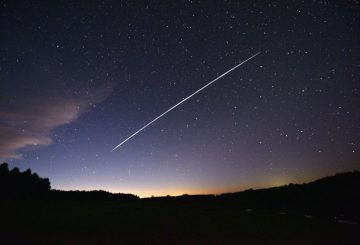Việc kiểm tra tiền thuê nhà có thể gây khó chịu cho người thuê nhà, những người thường lo lắng về việc nhà của họ cần phải sạch sẽ như thế nào. Chủ nhà hoặc người quản lý tài sản kiểm tra sự sạch sẽ, hư hỏng và các thiết bị có hoạt động không. Jessica Currie từ Ray White cho biết việc kiểm tra giúp bảo vệ người thuê nhà khỏi những khiếu nại không công bằng khi họ rời đi.
Zanian Steele từ Renters United chỉ ra rằng một số chủ nhà thiếu kiến thức về trách nhiệm của họ, đặc biệt là các chủ nhà nhỏ hơn. Trong quá trình kiểm tra, các nhà quản lý khách sạn sẽ tìm kiếm sự sạch sẽ chung, nhưng nó không cần phải hoàn hảo, như một khách sạn. Ví dụ, một vài mảnh vụn hoặc một chút bụi là chấp nhận được.
Tuy nhiên, người thuê nhà có thể cần phải rời khỏi tài sản trong tình trạng tốt hơn khi họ chuyển ra. Chủ nhà có thể chụp ảnh trong quá trình kiểm tra, nhưng họ không nên chụp ảnh các vật dụng cá nhân trừ khi cần thiết. Kiểm tra cũng là cơ hội để người thuê báo cáo bất kỳ vấn đề bảo trì nào.
Việc kiểm tra có thể diễn ra từ 8 giờ sáng đến 7 giờ tối đối với dịch vụ cho thuê và 8 giờ sáng đến 6 giờ chiều đối với nhà trọ. Người thuê phải được thông báo ít nhất 48 giờ trước khi kiểm tra. Ngoài ra, người thuê nhà không nên phải dọn dẹp bên ngoài tài sản; đó là công việc của chủ nhà.
Nếu người thuê nhà có vật nuôi hoặc sử dụng tài sản theo một cách nhất định, họ có thể chịu trách nhiệm dọn dẹp các khu vực cụ thể. Ví dụ, nếu BBQ gây ra một mớ hỗn độn trên boong, người thuê nhà có thể được yêu cầu dọn dẹp khu vực đó.
Người quản lý bất động sản có thể mở tủ để kiểm tra rò rỉ nhưng nên tôn trọng quyền riêng tư của người thuê nhà. Điều quan trọng là chủ nhà phải thông báo cho người thuê nhà nếu họ muốn kiểm tra các khu vực nơi lưu trữ các vật dụng cá nhân.
Người thuê nhà không nên bị buộc phải trả tiền cho việc dọn dẹp chuyên nghiệp trừ khi có quy định trong hợp đồng thuê nhà và họ không cần phải lo lắng về sự hao mòn bình thường của tài sản. Các vấn đề như sàn bị mòn hoặc vết bẩn nhỏ do sử dụng thường xuyên được coi là hao mòn hợp lý, trong khi thiệt hại cố ý thì không.
Hiểu quyền và giao tiếp với chủ nhà là rất quan trọng đối với người thuê nhà. Họ nên ghi lại bất kỳ vấn đề nào với hình ảnh và email. Nếu các vấn đề phát sinh không thể giải quyết được, người thuê nhà có thể tìm kiếm sự giúp đỡ từ Cục Tư vấn Công dân hoặc Tòa án Thuê nhà.
Kiểm tra thường xuyên giúp theo dõi cách duy trì tài sản và có thể bảo vệ người thuê khỏi các khiếu nại không công bằng. Điều này đảm bảo rằng mọi hao mòn đều được thừa nhận, tránh những bất ngờ khi kết thúc hợp đồng thuê nhà.





























































